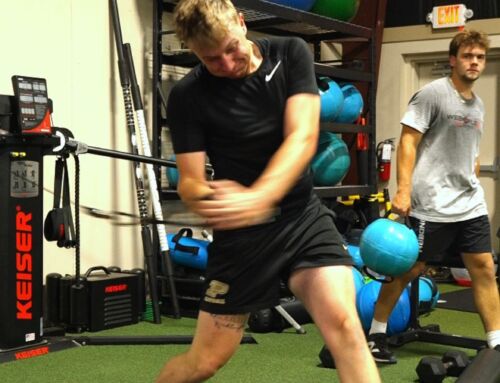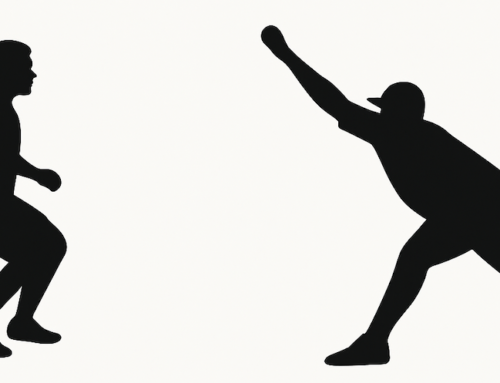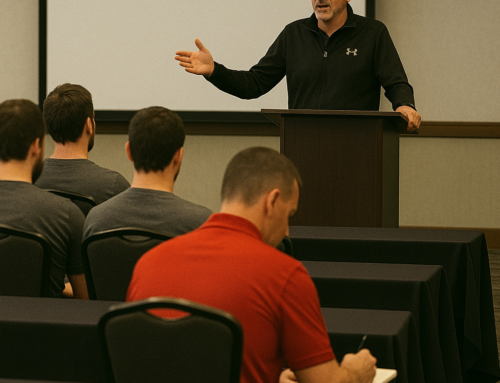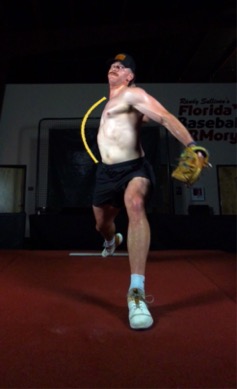
Coaches love buzzwords. “Hip-to-shoulder separation” has been one of the hottest phrases in pitching for the past couple of decades. Many have touted it as the secret sauce for velocity. The idea is simple: the greater the separation between the hips and shoulders, the more elastic energy you store, and the harder you throw.
But like most things in baseball training, the truth is more complicated.
720 Permutations and Counting…
When you consider the three planes of motion in the pelvis (frontal, sagittal, and transverse) and the three planes of motion in the trunk, you get 720 possible movement combinations. And that’s assuming the body moves in true anatomical planes (which it doesn’t). The reality is that the possibilities are infinite.
Yet, some think they can capture an athlete’s ideal separation with a single motion-capture measurement of hip-to-shoulder separation in the transverse plane.
That’s like trying to describe the complexity of an orchestra by only listening to the trumpet section.
The Problem With Motion Capture:
Many biomechanists use motion capture technology to analyze pitching mechanics, but it's important to know that these systems have limitations—especially when it comes to complex movements like hip-to-shoulder separation.
Motion capture works by tracking position, velocity, and acceleration to estimate the forces and torques acting on a pitcher’s body. While this can provide useful insights, the models it relies on simplify the human body too much. These models treat joints as perfect hinges and ignore key factors like muscle activation, fascial interactions, and individual anatomical differences.
Motion capture assumes that all forces acting on the body can be accurately measured. But pitching is a dynamic, high-intensity movement influenced by complex interactions in motor control. Since motion capture doesn’t account for this, it can lead to incomplete or misleading conclusions about mechanics.
Biomechanists will argue that they have collected hundreds of thousands of motion capture data points, and the correlation between hip-to-shoulder separation and pitching velocity is strong. Two studies by Sgroi et al. and Orishimo et al. present the association between hip-shoulder separation at front foot contact and key pitching metrics such as trunk rotation velocity and pitch speed. The inference is that greater separation is better. However, we must appreciate that motion capture, isn’t a perfect measurement tool. This is especially true with markerless systems such as those used to collect in-game data for many MLB organizations.
As human performance scientist Paul Glazier noted in a recent article,
“If markerless motion capture is to be useful in a profiling or monitoring capacity, the amount of measurement error needs to be smaller than the amount of movement variability over iterative performance trials. Current evidence suggests that it is unlikely that any existing markerless system satisfies this requirement.” (3)
Additionally, as Rob Gray recently discussed on his Perception-Action Podcast in a review of an article by Dufek et al. (4,5), the current method of research in motion capture study presents a problem. Studies typically collect data points from a large group, apply statistical analysis tools, and create a line of regression that identifies the “average” performer. We see this in MLB player development processes all the time. “The average major leaguer accelerates his pelvis at this level.” “The average major leaguer achieves this much separation.”
However, upon deeper investigation, it turns out the “average major leaguer” doesn’t exist. He is a composite of every player, and he is a ghost. As Dupek states,
“The group models (are) not representative of any of the individual subjects' performances and indicate that group models can describe a mythical ‘average' performer. These results suggest that researchers must be cautious when evaluating group performance patterns.”
Moreover, another flaw exists in the way motion capture technology is currently used.
The assumption in motion capture is that the sensors (e.g., gyrometers, accelerometers, and magnometers) reflect what the body is doing. The truth is that the sensors tell us what the sensors are doing. It is a massive inferential leap to suggest that they can even begin to capture the sophisticated dynamics and nuances of the synergized muscle contractions that work to coordinate complex movements, and contrary to popular scientific thinking, merely increasing the sample size doesn’t dilute this fundamental error.
In a paper by GC Van Orden and the late iconic motor control researcher, Michael Turvey (6), it was reported that
“Larger samples of the same data yield larger variance estimates up to the limits of the system. This possibility runs against the grain of all conventional analyses.”
In other words, when you start a study with a flawed assumption — in this case, that the sensors reflect what the muscles are doing — increasing the sample size doesn’t diffuse the effects of outliers; it actually amplifies the error you have made.
In the 1500s, topography was emerging, but mapmakers quickly found that the larger the area they attempted to map, the less accurate they became. Combining local maps did not accurately represent the entire territory. It's the same in movement science. The sum of the parts does not equal the whole.
In short, while motion capture can be a helpful tool, it’s not the ultimate authority on pitching mechanics. Coaches should be cautious when biomechanists present data as absolute truth, especially if it contradicts what they see in real-world performance. Understanding the bigger picture—including muscle coordination and individual differences—leads to better training and injury prevention strategies.
More Separation is Not Necessarily Better
One of the biggest myths is that more hip-to-shoulder separation always leads to better performance. This thinking comes from the “X-Factor” concept in golf, where maximizing torso-pelvic separation supposedly leads to more clubhead speed.
But here’s the problem:
Hip-to-shoulder separation, as commonly measured in baseball, only accounts for motion in the transverse plane—the rotation of the torso relative to the pelvis. But it completely ignores slack regulation in the sagittal and frontal planes. If the body isn't stabilizing slack in all three planes, extra separation can become an energy leak rather than an energy boost.
More is not always better. Better is better.
The Goldilocks Zone of Slack Regulation
So, if maximizing hip-to-shoulder separation isn’t the answer, what is?
It comes down to self-organization and slack regulation.
Every athlete needs to find their Goldilocks combination—not too much, not too little—of co-contraction between muscle groups to ensure that energy transfers efficiently through the kinetic chain. This requires the right amount of tension at the right time across all three planes of motion.
The abdominals and the dorsal paraspinal muscles are vital in transferring energy from the lower body to the arm. Keeping all of the abdominal muscles near their optimal length is critical. This is where muscles work the best.

Anterior Trunk Musculature

Posterior Trunk Musculature
But, because of their inherent anatomical traits, the bandwidth for optimal length in the abdominals is exceptionally narrow. They are the divas of the system, easily disrupted. So, overstretching or understretching the abdominals and back muscles (even a little) can have significant negative consequences.
Slack regulation is key. If there is too much slack, you lose energy. If there is too little slack, you restrict movement and force compensation elsewhere.
The body isn’t a simple hinge or pulley system—it’s a dynamic, self-organizing structure that adapts to forces in real time.
The Only Real Solution: Self-Organization … Let Athletes Explore
Trying to force an athlete into a universal hip-to-shoulder separation number is like giving everyone the same shoe size and telling them to run a marathon. The real key is creating an environment where pitchers can explore all possible movement solutions and self-organize into their most efficient pattern.
If we're going to help our players, we must train movement, not mechanics. Our training programs must expose our players to sensory experiences that allow them to self-organize adaptable movement solutions that best meet the task's requirement, the environment, and the physical and mental state of their bodies and mind.
This is why external perturbations, variable loading (like aqua bags), and, multi-plane training drills that place the abdominals under time-pressure are so powerful. They force the athlete’s body to recruit and synchornize co-contractions that regulate slack and solve movement problems dynamically, rather than trying to fit into an arbitrary textbook model.
Because in the end, there’s no one-size-fits-all movement strategy—only the one that works best for that athlete, at that moment, under those constraints.
The Key Attractors:
Self-organization of pitching revolves around universal attractors of agility identified by Frans Bosch in his book Anatomy of Agility (7).
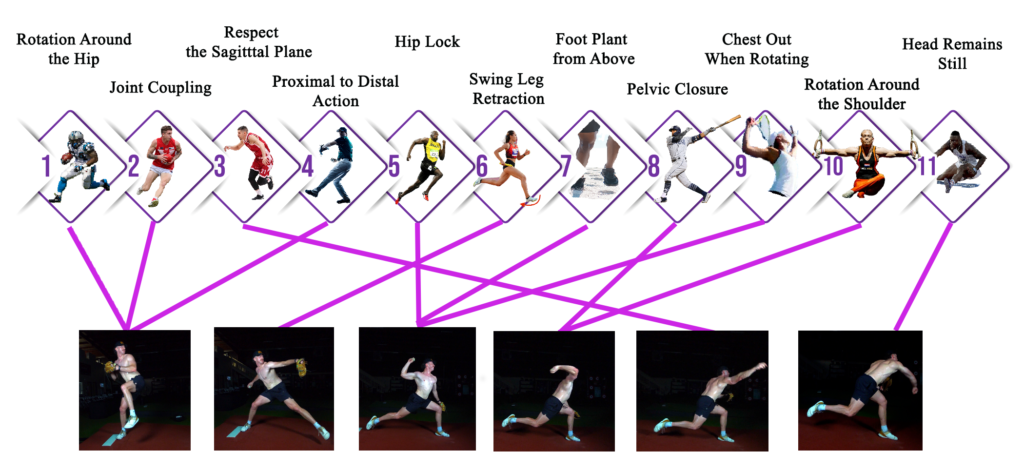
The primary attractors involved with hip-to-shoulder separation are hip lock at toe-off and chest out while rotating.When coordinated and synergized, these two attractors allow the athlete to discover his unique optimal lengths in both the transverse plane and the sagittal plane. Therefore, exercise experiences that allow exploring these two attractors simultaneously can be of great value.
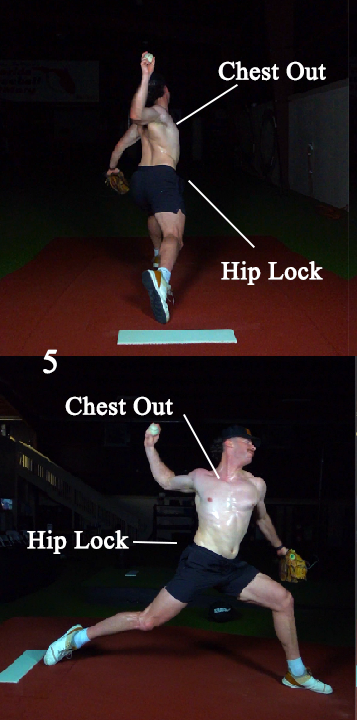
One such exercise is our ARMory adaptation of a traditional exercise, the reverse throw. In our interpretation, rather than half-kneeling and tossing the ball backward, we position the athlete in a hip lock parallel to the wall and use variable weighted balls, or aquaballs, to elicit the co-contractions necessary to stabilize the hip lock and the thoracic extension at the same time.
Rather than forcing the athlete into an artificially determined position, we immerse them in experiences that allow them to explore and discover the best combination for them.
Final Thoughts
Hip-to-shoulder separation isn’t the magic bullet it’s made out to be. It’s just one piece of a much larger puzzle. Instead of chasing numbers on a motion capture readout, we should be helping pitchers develop synergized co-contractions that regulate slack across all three planes.
The best coaches don’t force athletes into arbitrary positions—they foster an environment where athletes learn how to control their movements with adaptability and efficiency.
That only happens when we stop overcoaching positions and start coaching movement solutions.
If you want to learn more about leveraging self-organization to optimize pitching performance, call us at 866-787-4533 or choose one of our incredible training programs:
Extended Stay SAVAGE Summer Training (M-F)
One-on-One Precision Strike Session (4 hours)
SAVAGE Satellite Program (Remote Training)
References:
- Sgroi, T., Chalmers, P. N., Riff, A. J., Lesniak, M., Sayegh, E. T., Wimmer, M. A., Verma, N. N., Cole, B. J., & Romeo, A. A. (2015). Predictors of throwing velocity in youth and adolescent pitchers. Journal of Shoulder and Elbow Surgery, 24(9), 1339-1345. https://doi.org/10.1016/j.jse.2015.02.015
- Orishimo, K. F., Kremenic, I. J., Mullaney, M. J., Fukunaga, T., Serio, N., & McHugh, M. P. (2023). Role of pelvis and trunk biomechanics in generating ball velocity in baseball pitching. Journal of Strength and Conditioning Research, 37(3), 623-628. https://doi.org/10.1519/JSC.0000000000004314
- Glazier, P. S. (2025). Markerless motion capture in sport: panacea or Pandora’s box? Sports Biomechanics, 1–8. https://doi.org/10.1080/14763141.2025.2458485
- Dufek, J. S., Bates, B. T., Stergiou, N., & James, C. R. (1995). Interactive effects between group and single-subject response patterns. Human Movement Science, 14(3), 301–323. https://doi.org/10.1016/0167-9457(95)00013-I
- Gray, R. (2024, Nov 12). Do Averaged, Group Data Accurately Capture & Represent Individual Movement Solutions? YouTube.https:youtu.be/A0auGaWKDo0?si=LRfASo66cPGAeFxz
- Van Orden GC, Holden JG, Turvey MT. Self-organization of cognitive performance. J Exp Psychol Gen. 2003 Sep;132(3):331-50. doi: 10.1037/0096-3445.132.3.331. PMID: 13678372.
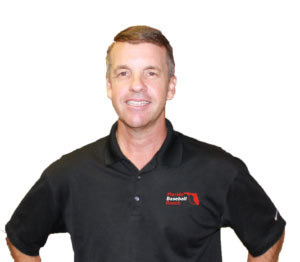
Randy Sullivan, MPT, CSCS CEO, Florida Baseball ARMory


